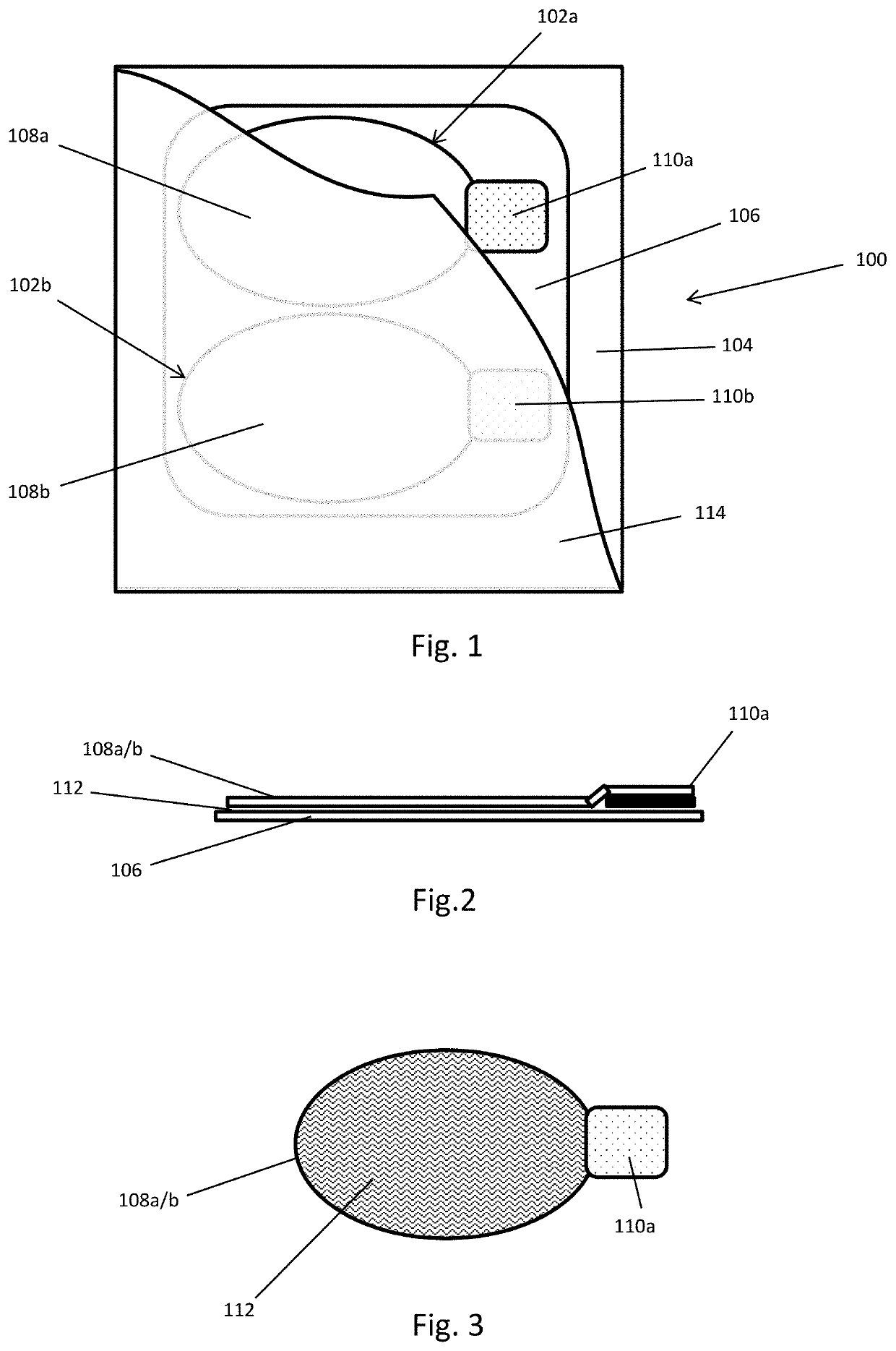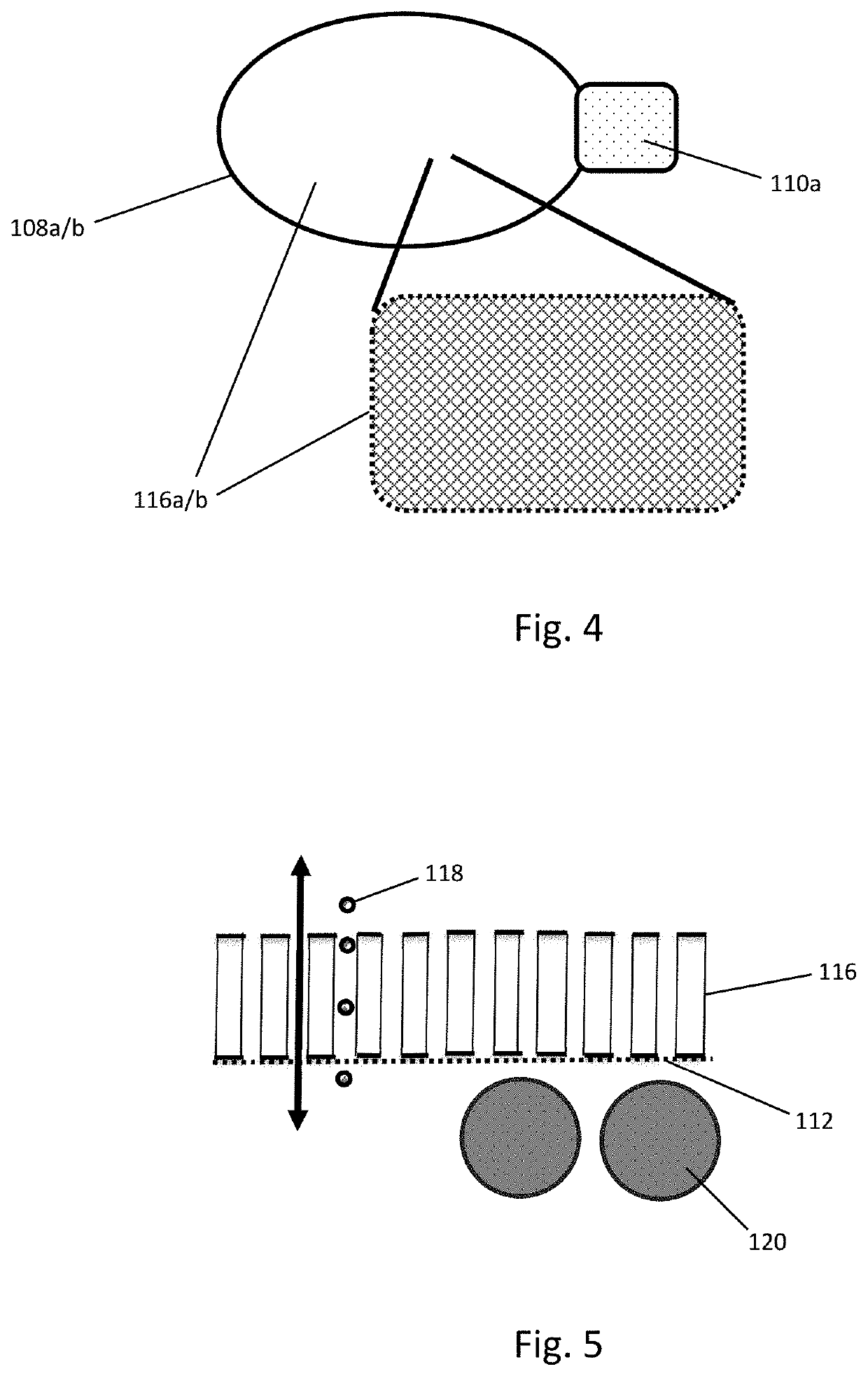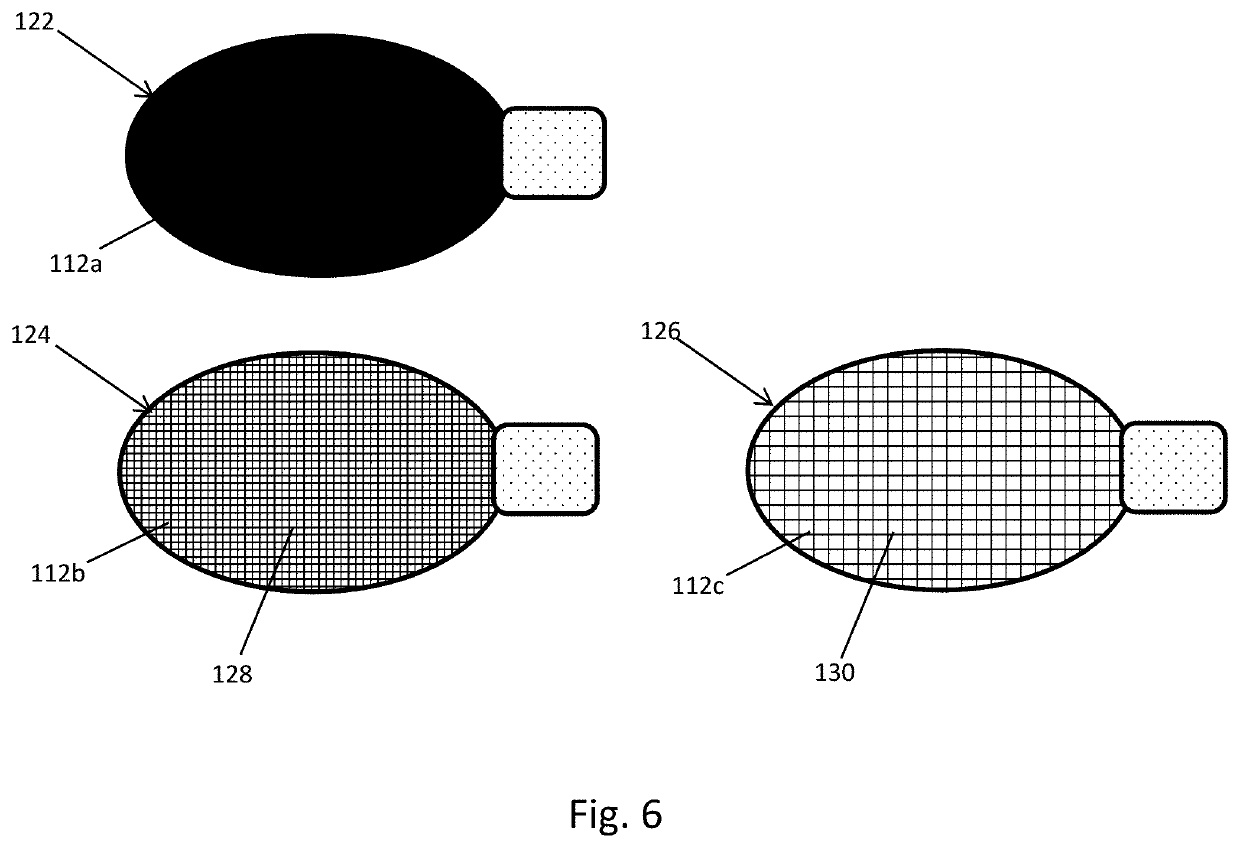Eyelid closure patches
a technology for eyelids and closures, applied in eye surgery, medical science, neck bandages, etc., can solve the problems of skin abrasion, increased risk of post-surgery infection, and inability to know the cause or how of corneal abrasion
- Summary
- Abstract
- Description
- Claims
- Application Information
AI Technical Summary
Benefits of technology
Problems solved by technology
Method used
Image
Examples
Embodiment Construction
[0053]In order that the invention may be more clearly understood one or more embodiments thereof will now be described, by way of example only, with reference to the accompanying drawings, of which:
[0054]FIG. 1 illustrates a top-down view of a protective sterilisation pouch of an embodiment of the third aspect of the invention, which contains a pair of eyelid closure patches, each of an embodiment of the first aspect of the invention
[0055]FIG. 2 is a side view of the eyelid closure patches and release liner of FIG. 1FIG. 3 is a bottom-up view of one of the eyelid closure patches of FIG. 1
[0056]FIG. 4 is a top down view of one of the eyelid closure patches of FIG. 1, comprising a zoomed-in view illustrating the semi-permeable membrane thereof
[0057]FIG. 5 illustrates the function of the semi-permeable membrane of the eyelid closure patches of FIG. 1
[0058]FIG. 6 illustrates three further embodiments of eyelid closure patches of the first aspect of the invention, each comprising adhesiv...
PUM
 Login to View More
Login to View More Abstract
Description
Claims
Application Information
 Login to View More
Login to View More - R&D
- Intellectual Property
- Life Sciences
- Materials
- Tech Scout
- Unparalleled Data Quality
- Higher Quality Content
- 60% Fewer Hallucinations
Browse by: Latest US Patents, China's latest patents, Technical Efficacy Thesaurus, Application Domain, Technology Topic, Popular Technical Reports.
© 2025 PatSnap. All rights reserved.Legal|Privacy policy|Modern Slavery Act Transparency Statement|Sitemap|About US| Contact US: help@patsnap.com



